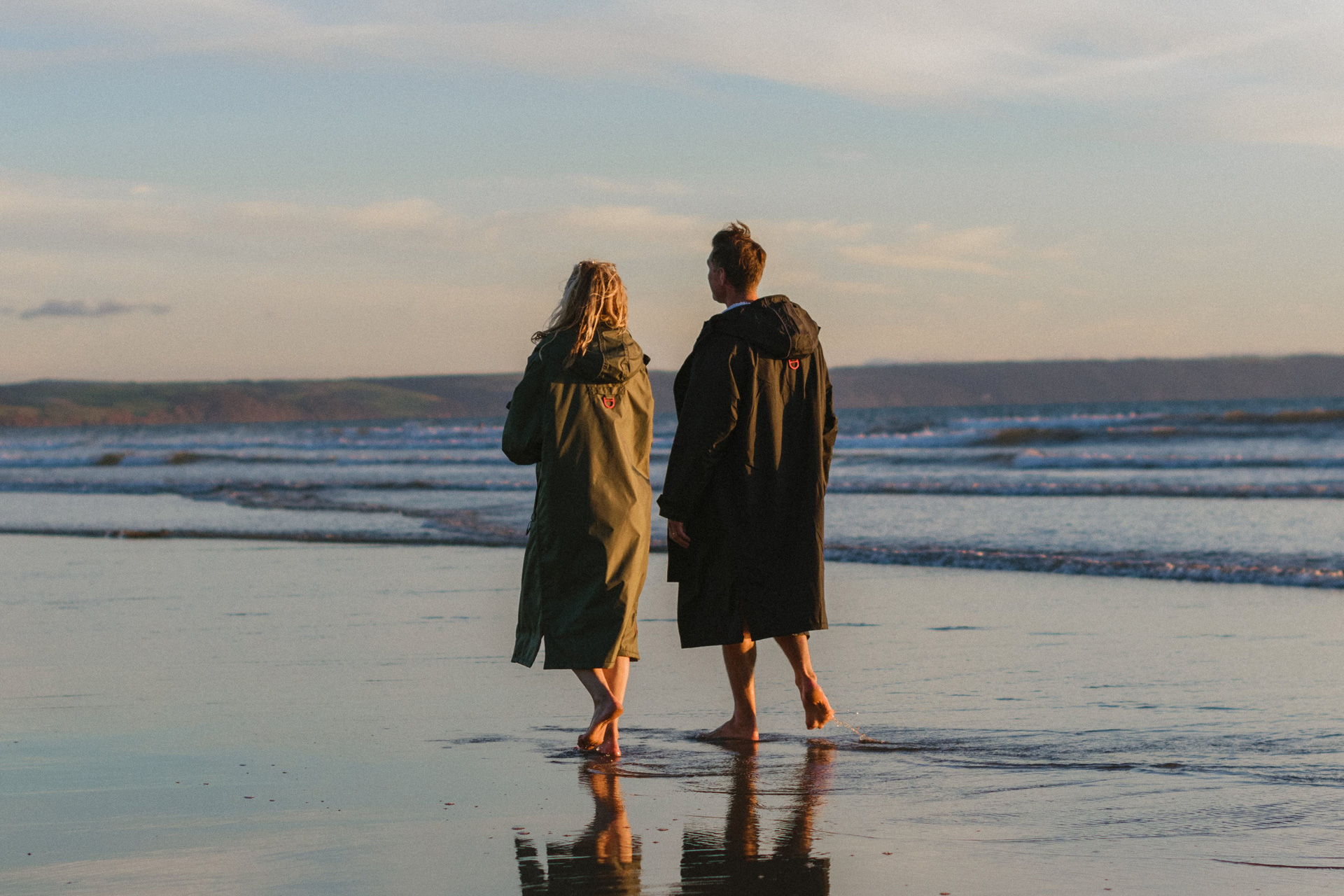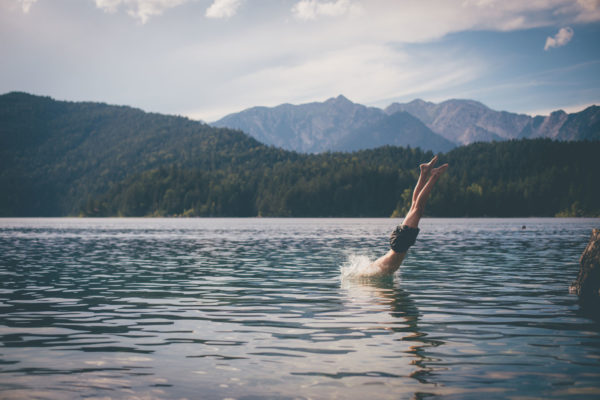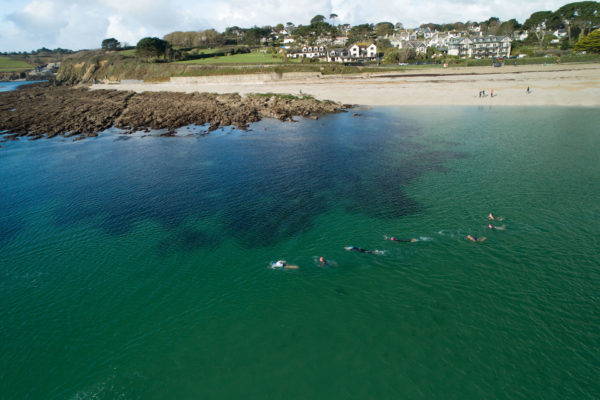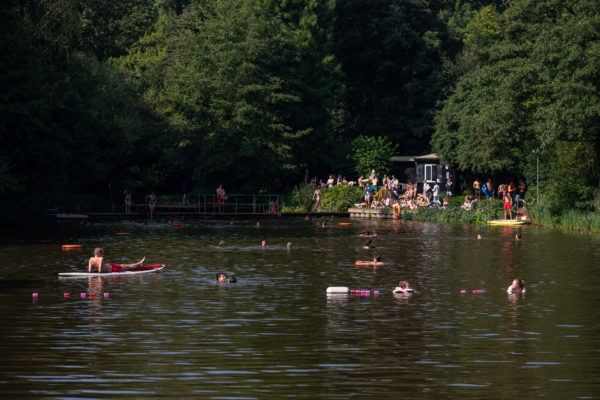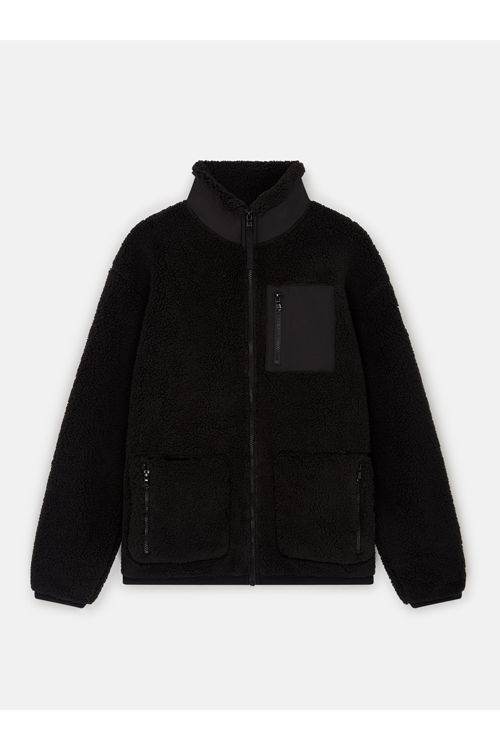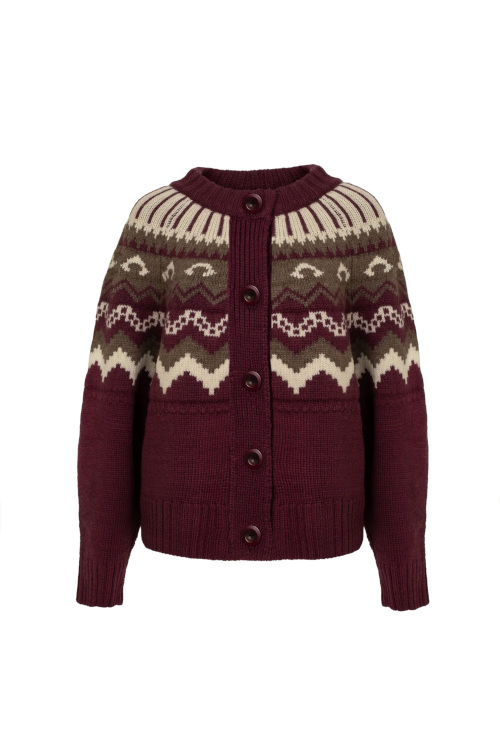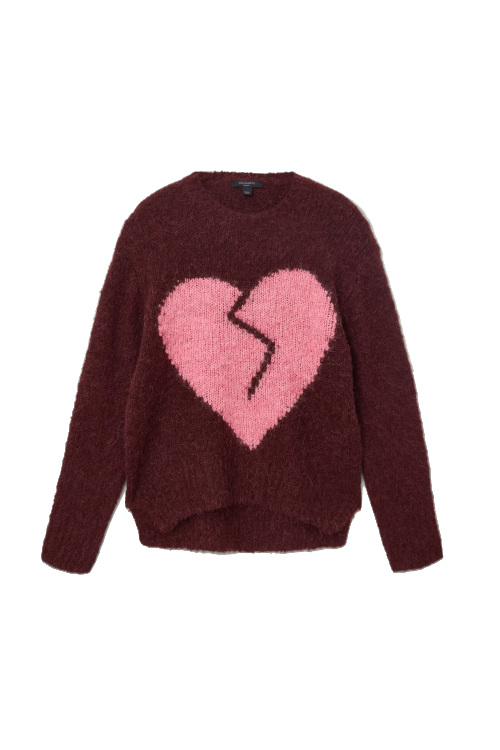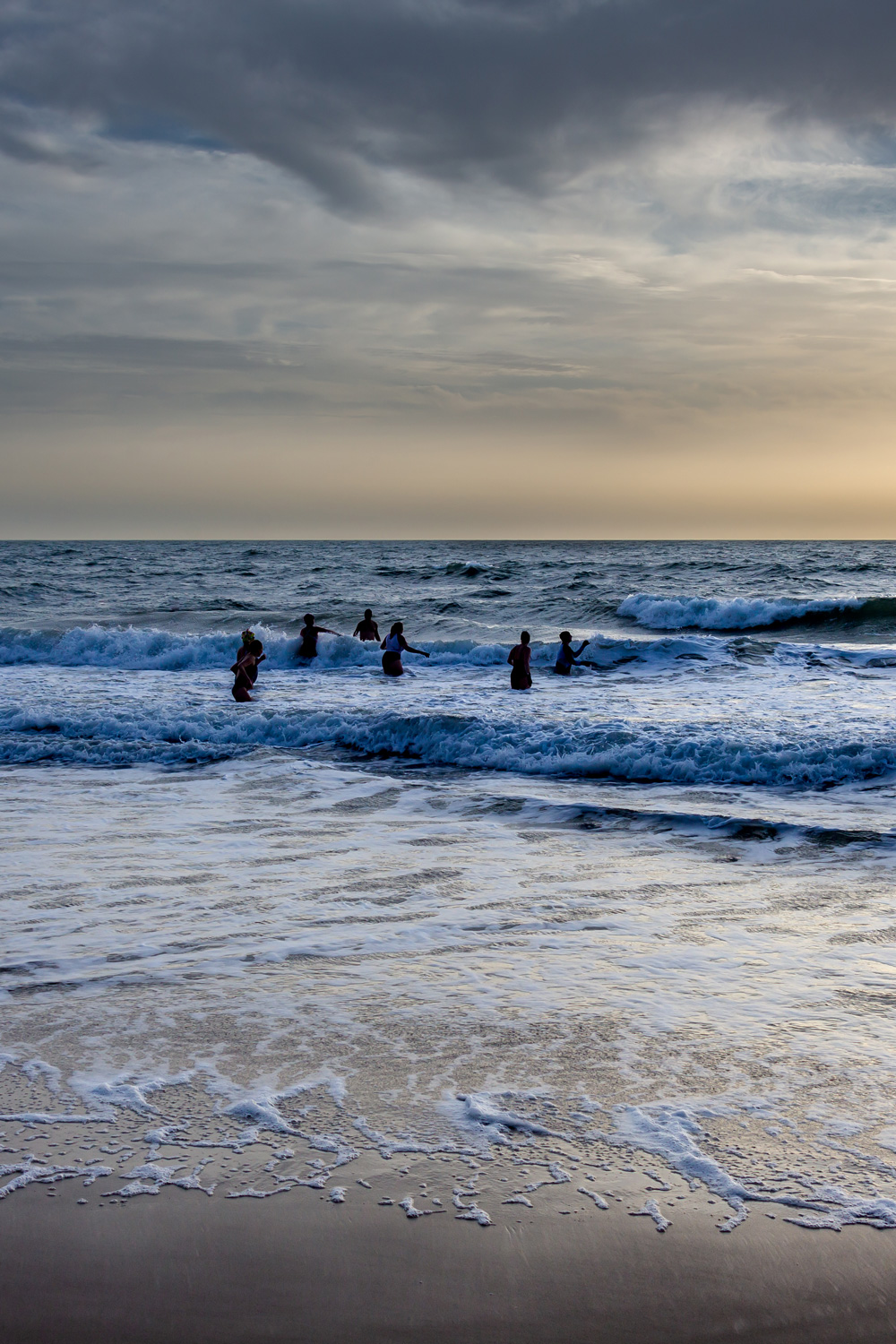
Planning A New Year’s Day Wild Swim? Here’s What You Need To Know
By
11 months ago
Expert tips for your first cold-water dip
For many of us, New Year’s Day is spent nursing a hangover on the sofa. But for thousands of brave souls across the UK, the first day of the year is spent heading out for a freezing cold dip in one of the country’s wild swimming spots. The long-standing tradition symbolises new beginnings, plunging headfirst into the new year, and events are uplifting with a general sense of camaraderie. But if you’re a beginner, there are a few important things to know before diving straight in. Outdoor swimming expert Becky Gribble joined forces with outerwear brand D-Robe to share her top tips on outdoor swimming for the first time during the winter.
Wild Swimming On New Year’s Day: A Guide
Is A New Year’s Day Wild Swim Safe For Beginners?
Ideally, it’s best to start wild swimming during the summer so you can ease in when the water is a little warmer. However, it’s not impossible to have your first dip during the winter, says Becky. ‘Many people often start swimming outside for the first time during the colder months. Christmas Day, Boxing Day and New Year’s Day swims are becoming incredibly popular and joining an event or other enthusiasts can be a great way to start getting into the hobby. The important thing is to do your research and be prepared.’
In the run-up to the event, Becky recommends preparing your body for the icy climes by taking some cold showers at home. ‘Gradually exposing yourself to colder temperatures introduces you to your body’s natural responses in a safe environment so you’re not caught off guard,’ she says. ‘Cold showers can also improve your body’s ability to regulate temperature, making for a smoother transition.’
When the big day comes, approach the dip with caution. ‘Risks of wild and cold swimming in winter are largely associated with becoming too cold and getting hypothermia,’ says Becky. ‘Listen to your body and try not to stay in the water longer than you feel able. Make sure you’re prepared and have a solid plan to get dry and warm once you’re out of the water.
‘Another common risk is cold water shock, which can cause a drop in blood pressure, panic and unstable breathing. The best way to avoid this is to submerge gradually to allow yourself to acclimatise. This is where having somebody with you can be really important.’
Another tip? Focus on your breathing. ‘The absolute best advice I was ever given for wild swimming (especially in the winter months), is to breathe out as you submerge,’ notes Becky. ‘This might sound simple, but our natural instinct is to breathe in when we go into cold water. By breathing out as you submerge it allows your breathing to come naturally into a controlled rhythm. This small tip definitely changed my wild swimming experience for the better.’
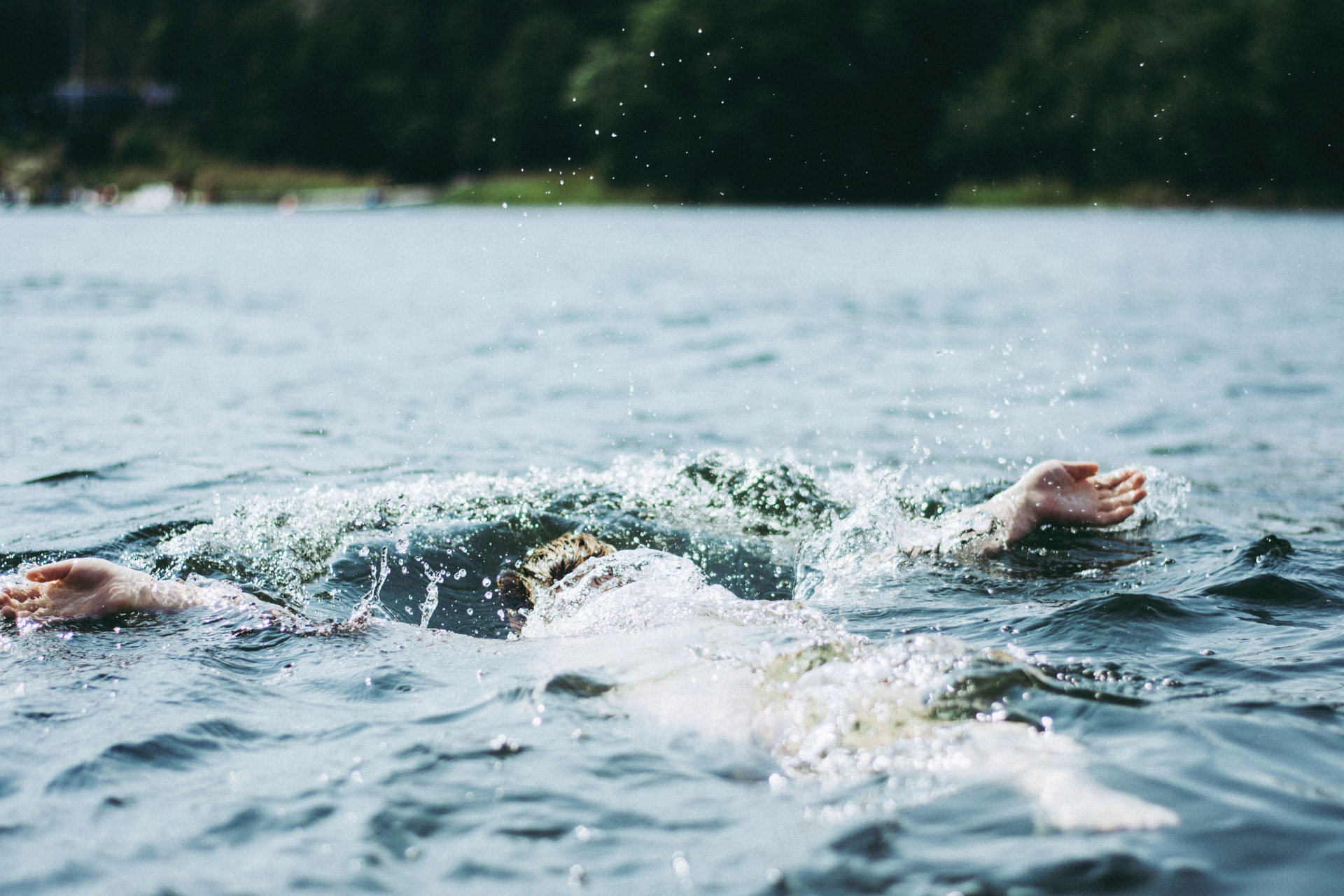
Wild Swimming, Image: Unsplash, by Jana Sabeth
How To Find Wild Swimming Spots And Events
Becky advises against going on your own, as this can be dangerous (and much less fun). Instead, find a New Year’s Day event taking place near you, or consider joining a group such as Bluetits Chill Swimmers or Swim England. You can also find popular wild swimming spots using apps like WildSwim and SurfLine, where you can check the tides, surf and wind to ensure the conditions are safe for swimming.
Top Tips For Beginners
Becky’s golden rules for beginners are:
- ‘Always go with someone: Even if they are just sitting on the side watching, always go with someone. Cold water can affect you fast, and having someone there means help if you need it, whether it’s cramping or cold shock. Plus, it’s a great way to socialise!
- Ease yourself in, don’t jump straight in: You don’t have to stay in the water for a long time. Smaller bursts in cold water are actually shown to have the same/best benefits.
- Take plenty of layers for afterwards: I personally take a hot water bottle with me, ready for when I get out.’
What Kit Do You Need?
When it comes to wild swimming, having the right gear can be transformative. Becky recommends:
- ‘Swimsuit: Personally, I wear just a swimsuit when I go swimming. Sometimes I’ll also switch to a shortie. This really depends on your spot; always pay close attention to the weather, the season and water conditions to determine the best gear to take.
- Wetsuit: If conditions are frigid, invest in a 4-5 mm thick wetsuit for the best insulation. Neoprene is best for flexibility and warmth. Make sure it fits snugly without being restrictive.
- Swim socks/boots: These are a great idea to help keep you warmer, but they are also essential to help protect your feet, especially if your spot has rocky or unstable terrain.
- Wetsuit gloves: Gloves not only keep your hands warm but that warmth helps you maintain dexterity, which can be really important when you’re trying to safely enter/exit the water.
- Tow float: A must for wild swimming, especially for beginners. They keep you visible to others and offer a handy flotation aid if you need to take a break. Not essential in tidal pools, but good for bigger bodies of water.
- A hot water bottle: I always take a hot water bottle with me to have on hand when I get out. It helps provide heat to your core or hands, which is essential for countering afterdrop and restoring your body temperature. It’s an easy and effective way to get warm and stay safe.’




